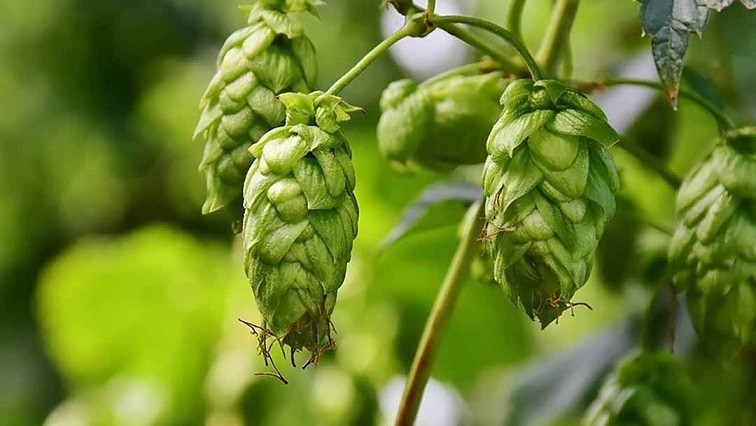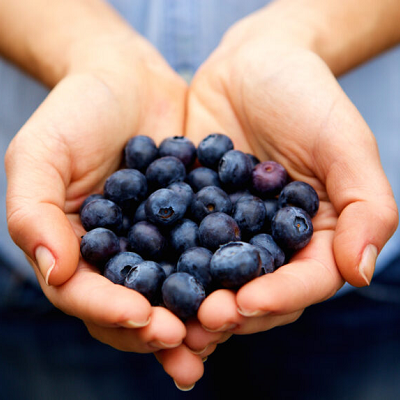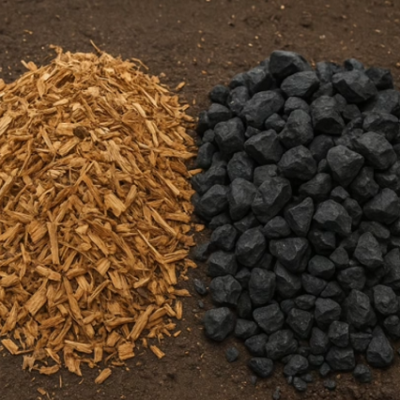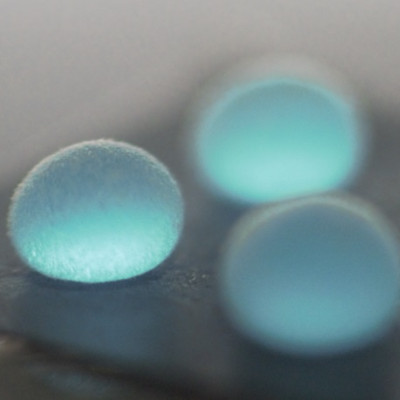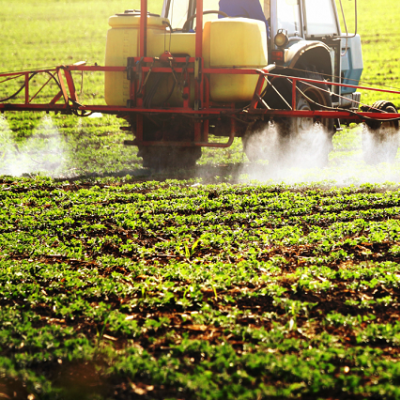In the past few years, craft beer-making has exploded in popularity around the world, including many beer styles that make use of many more and different types of hops than conventional commercial beers. A traditional preservative in beer, hops also add a rich bitterness and impart floral or citrus aromas and flavors. As a result, hop production hit a record high in 2019.
However, only the flower of the hop plant is used in beer making. The stems and leaves, which make up about 75 percent of the biomass produced in hop cultivation, are typically burned or tossed in a landfill after harvest. As some 75% of hop plants end up in landfills, the technique should reduce the beer industry's growing waste and land footprint while also cutting back on petroleum feedstocks.
A group of researchers have developed a technique that 'upcycles' these waste products by using hop stems as raw material to extract CNFs. Since the 2000s, there has been increasing interest in CNFs due to their outstanding properties, including low weight and high strength and stabilization. Thanks to those advantages, CNFs are expected to be used as excellent plant-derived materials for reducing the amount of petroleum based plastics in various industrial applications such as automotive and housing industries as well as food and cosmetic fields.
A paper describing the technique was published in the journal ACS Agricultural Science & Technology on June 11.
"This really would deserve a hearty 'cheers' if we managed to reduce dependence on petroleum while also radically reducing the agricultural waste from the beer industry," said Izuru Kawamura, associate professor in the Graduate School of Engineering Science at Yokohama National University and the lead researcher on the project.
CNFs had been extracted successfully from wood and from agro-industrial wastes such as pineapple leaves, banana stems, grapefruit peels, and even spent coffee grounds from cafes.
"But until now, no attempt had been made to isolate CNFs from hop stems," Kawamura added.
Plant cell walls are made of cellulose microfibrils, or very small and slender fibers, in a matrix composed of lignin and hemicellulose. The particular chemical compositions of cellulose, hemicellulose, and lignin vary widely depending on the source of the fibers.
Generally, CNFs are extracted from wood pulp via a series of purification steps followed by refinement via treatment with chemicals or enzymes. Previously, a technique involving application of 2,2,6,6-tetramethylpiperidine-1-oxyl radical (described more simply as 'TEMPO) to pretreated cellulose from wood followed by a gentle mechanical disintegration in water had obtained CNFs of 3-4 nanometers in width.
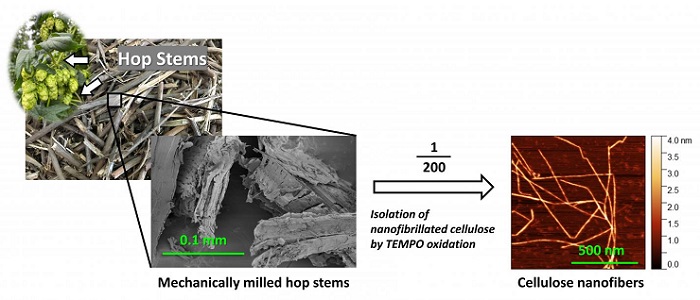
Cellulose nanofibers were produced from waste hop stems by TEMPO-mediated oxidation.
The researchers used the TEMPO technique, but also reduced the pretreatment processes for removing lignin and hemicellulose in hop stems which is considered as lignocellulose fibers prior to the TEMPO step. Even without the pretreatments, they could obtain CNFs with a median of about 2 nanometers. Using the chemical composition analysis, they were able to conclude that the hop stems contained a proportion of cellulose that is almost equal in proportion to that of wood.
This means that not only could this technique replace petroleum, but in a third environmental win, hop waste could also be used instead of wood as an alternative source for CNFs.
"You might even say 'three cheers' for CNFs from hops."
As a next step, the team wants to actually prepare some emulsions stabilized by hop stem-derived CNFs and demonstrate to industry their feasibility. If successful, they should lead to a significant reduction in the amount of conventional synthetic surfactants used.
Read the original article on EurekAlert.

